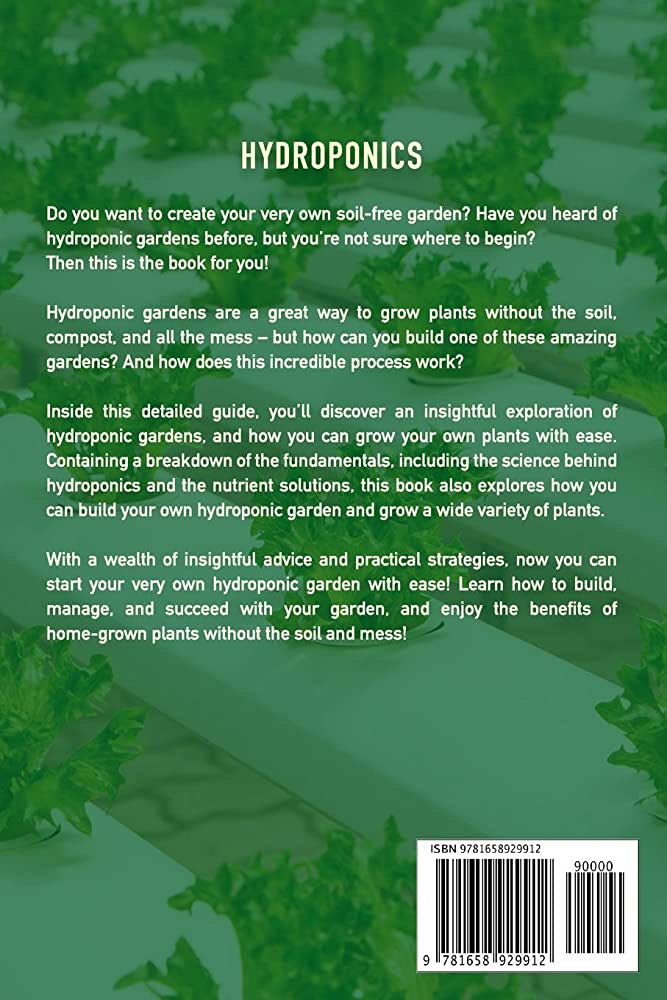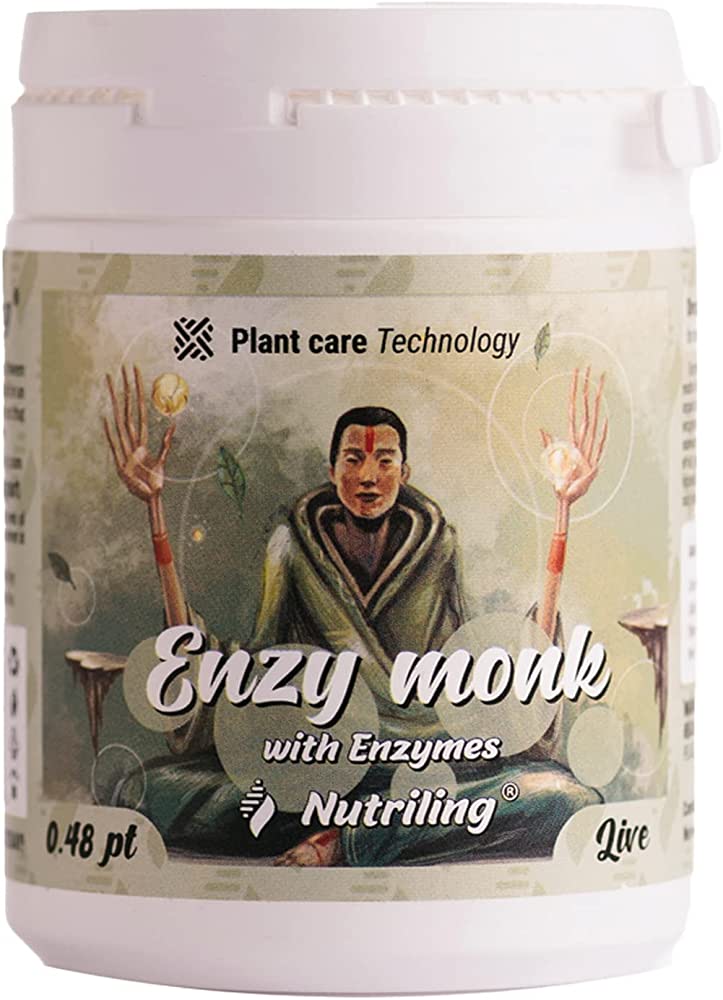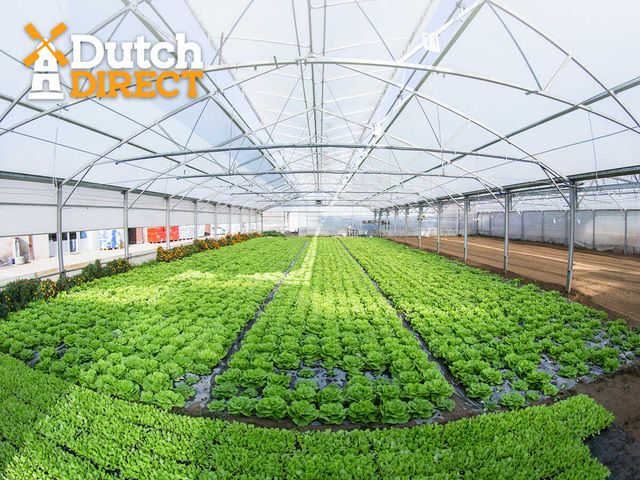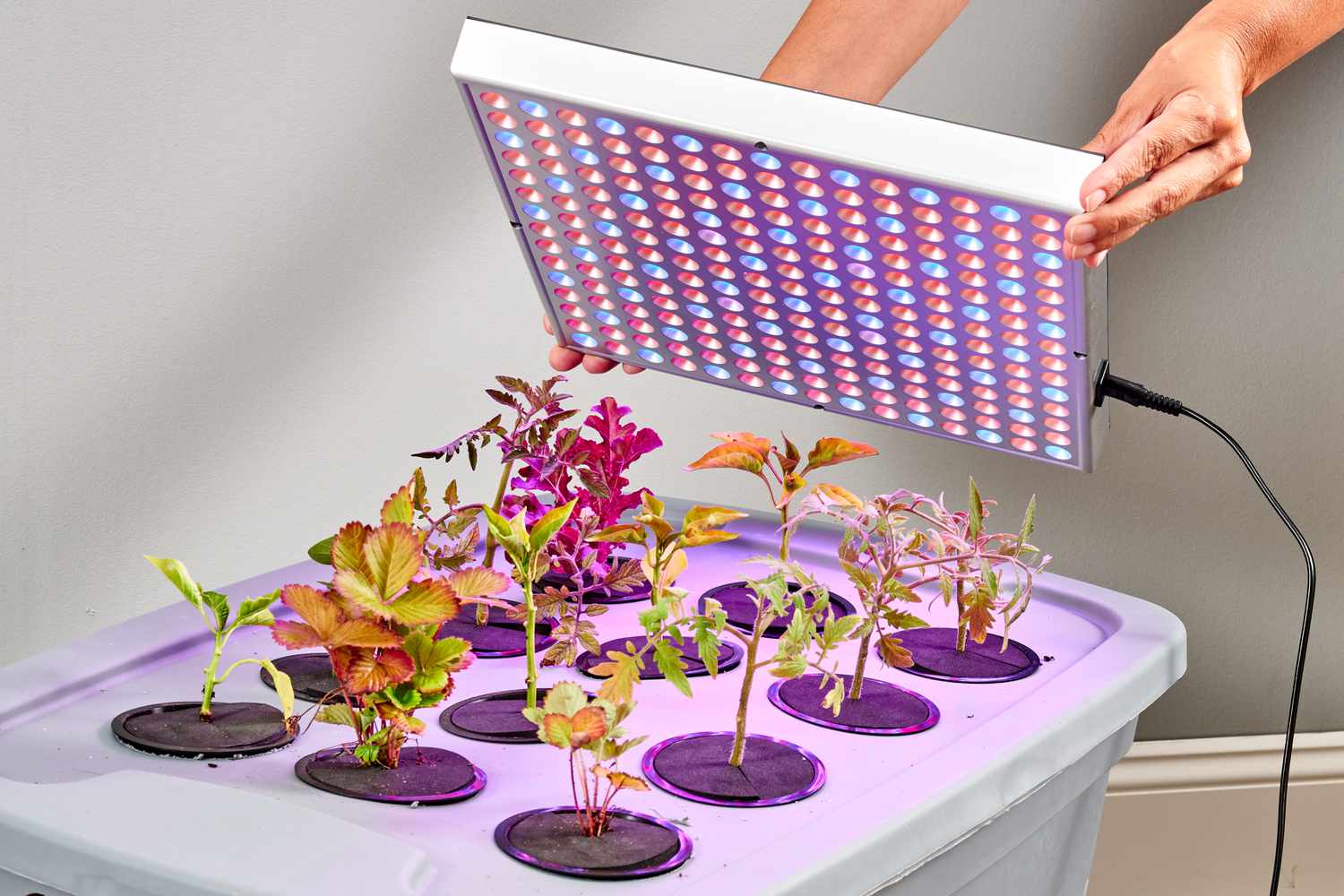Hydroponic pest and disease control involves using preventative measures, such as maintaining a clean environment and proper nutrient balance, as well as addressing any issues promptly through natural or chemical solutions. Hydroponic gardening is a soil-less method of growing plants where the necessary nutrients are provided through a nutrient solution.
Although it has many benefits, hydroponic gardening is not completely free from problems such as pest infestations and diseases. These problems can result in poor crop yield, and if not handled early, can lead to total crop loss. Thus, it is important to establish a proper pest and disease management program.
In this article, we will explore some of the common pests and diseases that affect hydroponic gardens, and effective ways of controlling them.

Credit: www.theclarionnews.com
The Importance Of Mastering Hydroponic Pest And Disease Control: Proven Strategies
Hydroponic gardening is a popular and efficient method of growing plants without soil. It requires proper nutrition, adequate light, and water. However, pests and disease can damage the hydroponic plants, deteriorating the quality of the yield and lowering the overall success of the hydroponic garden.
As a hydroponic gardener, mastering hydroponic pest and disease control is crucial for producing healthy and quality fruits and vegetables. This section will discuss the impact that pests and diseases can have on hydroponic plants, their potential negative link to the overall success of a hydroponic garden, and implementing effective prevention strategies.
Discuss The Impact That Pests And Diseases Can Have On Hydroponic Plants
Pests and diseases can ruin hydroponic gardens in many ways, including:
- Stunted growth of plants
- Reduced yields leading to lower productivity and profitability
- Discoloration of leaves or stems due to pests or disease infestation
- Higher chances of contamination or spread of pathogens
- Potential death of the plant, resulting in complete loss of investment
Link To The Overall Success Of A Hydroponic Garden
Successful hydroponic gardening depends on mastering hydroponic pest and disease control. Without proper pest and disease control, a hydroponic garden may experience lower yield resulting in lower return on investment. However, mastering hydroponic pest and disease control leads to:
- Higher yields leading to higher productivity and profitability
- Healthier plants, providing a better seasonal harvest
- Increased chances of generating repeat business
- A sustainable garden that maximizes the use of resources
Implementing Effective Prevention Strategies
The ideal approach to mastering hydroponic pest and disease control is through prevention strategies. These are:
- Proper sanitation practices such as cleaning the growing area to control contamination and reduce the spread of disease
- Quarantining new plants before introducing them to the existing garden
- Inspecting plants regularly for pests or diseases and taking immediate action to remove infected or affected plants
- Ensuring that new plants are kept free from disease using disease restrict measures like plant treatment and biological controls
- Maintaining an ideal growing environment with the right humidity, temperature, and ph levels to promote healthy plants
Mastering hydroponic pest and disease control is essential for hydroponic gardeners to produce healthy crops and gain repeat business. With the right prevention and treatment measures in place, hydroponic gardens can prove to be productive and profitable in the long term.
Understanding Hydroponic Pests And Diseases
Hydroponic Pest And Disease Control
Hydroponic farming is becoming increasingly popular due to its ability to provide fresh and healthy produce all year round. However, with the benefits of hydroponic farming come its own set of challenges, including pest and disease control. In this post, we will discuss the common pest and disease issues found in hydroponics and how to recognize and prevent them.
Understanding Common Pests And Diseases Found In Hydroponics
Hydroponic systems, just like traditional soil-based systems, can be vulnerable to various pests and diseases that can harm your plants. Here are some of the common problems to look out for:
- Aphids: Tiny, pear-shaped insects that can cause distortion and discoloration of leaves, stunted growth, and even death in extreme cases.
- Spider mites: These piercing-sucking pests will feed on the plant’s leaf cells, causing significant damage that typically includes yellow or white spots on leaves, stunted growth, and eventually leaf death.
- Fungus gnats: Small, grayish-black flies that lay their eggs on the moist growing medium of hydroponic systems. The larvae can then feed on the plant’s roots, leading to damage and, in some cases, death.
Examining How They Manifest And Affect Plants
It’s essential to understand that the impact of pests and diseases on your hydroponic crops varies depending on the type of pest or disease and the stage of growth of your plants. Here are some of the ways they manifest and how they affect the plant:
- Aphids will suck the sap from the plant’s leaves and stems, leading to stunted growth, yellowed leaves, and plant death when severely infested.
- Spider mites will cause yellow or white spots on the plant’s leaves, with webbing and defoliation as the infestation progresses. Plants can be severely damaged or die if left untreated.
- Fungus gnats will lay their eggs in wet growing medium, and their larvae feed on the plant’s roots leading to plant wilting and slow growth. Seedling growth can also be stunted when these pests are present.
Preventive Measures
Prevention is the best practice to minimize the effects of pests and diseases on hydroponic crops. Here are some preventive measures you can adopt.
- Maintain proper hygiene: Clean your hydroponic system thoroughly before planting and ensure you dispose of any dead plant debris and soil properly.
- Monitor plants regularly: Check your plants regularly for signs of pests or diseases. Isolate any infested plant to prevent the pests from spreading to other crops.
- Insect netting: Installing insect-resistant nettings can prevent pests like aphids, thrips, and whiteflies from affecting your plants.
Hydroponic farming is an innovative and exciting way to cultivate crops. However, without proper pest and disease control, the produce can be significantly impacted. Understanding the common pests and diseases prevalent in hydroponics and taking preventative measures to minimize their impact is crucial to ensure the health and vitality of your crops.
With the right knowledge and measures in place, you can enjoy a healthy and fruitful hydroponic garden.
Mastering Hydroponic Pest And Disease Control: Common Pests
Hydroponic systems are known to be highly productive and fulfilling. However, these systems come with a drawback of making plants susceptible to several pests and diseases that can adversely affect the growth, yield, and quality of crops. Thus, mastering hydroponic pest and disease control is essential to maintain the growth and quality of plants.
We will discuss common pests, their symptoms, and effective treatment options to control them.
Identifying Common Pests
The first step towards pest control is identifying the type of pest in the hydroponic system. Here are five common pests found in hydroponics:
- Aphids: Tiny, pear-shaped insects with long antennae that attack the leaves and stems of the plants.
- Spider mites: Tetranychid family members that perform tiny webbing and damage leaves.
- Thrips: Slender insects with wings that spread disease and viruses.
- Whiteflies: Small white-winged insects that cause leaf yellowing and susceptibility to plant viruses.
- Mealybugs: Cotton wool-like insects that suck sap from leaves, causing bad growth and leave yellowing.
Highlighting The Symptoms And Signs
It is essential to know the symptoms and signs of pests to detect and prevent pest infestation. Here are the symptoms and signs of the aforementioned common pests:
- Aphids: Curled leaves, leaf stunted growth, and sticky honeydew build-up.
- Spider mites: Yellowing or spotted leaves, webbing around the plant, and slow growth.
- Thrips: Visible scars or scabs on leaves, shiny leaves, and sudden wilting.
- Whiteflies: White-winged insects seen near plants, yellowing of plant leaves, black fungus and honeydew.
- Mealybugs: Cotton-like webbing on plant foliage, stunted growth, and leaf abnormalities.
Effective Treatment Options To Control Pests
There are several effective methods to control pests in hydroponic systems. Here are some of the most popular treatment options:
- Physical methods: Using natural traps like sticky yellow or blue cards or insecticidal soap can attract and trap pests, hindering their ability to reproduce and control pest populations.
- Biological control: Introducing predatory insects like ladybugs, praying mantis, lacewing larva or predatory mites can consume pests and reduce infestations.
- Chemical control: Hydroponic growers can use pesticides (herbicides and fungicides) to control leaf-eating and sap-sucking pests. For chemical control, ensure to follow instructions, use correct dosage, application rate, and avoid bacterial and fungal resistance.
Hydroponic growers need to monitor and control pest populations daily to protect their plants. With proper knowledge of common pests in hydroponics, the symptoms and signs, and effective treatment options, growers can prevent pests from destroying their precious crops.
Mastering Hydroponic Pest And Disease Control: Common Diseases
Hydroponic gardening is one of the most environment-friendly and economical ways to grow plants. However, dealing with pests and diseases can be challenging, especially for beginners. In this section, we will discuss common diseases in hydroponic gardening and how to prevent and treat them effectively.
Discussing Common Diseases
Plants grown in hydroponic systems are vulnerable to different types of diseases. Here are some of the most common ones:
- Pythium root rot: A fungal disease that affects the roots of the plants, leading to stunted growth, discoloration, wilting, and eventually, death.
- Powdery mildew: A fungal disease that affects the leaves and stems of the plants, causing a white powdery coating. It can lead to reduced photosynthesis, decreased yield, and deformation of the leaves.
- Fusarium wilt: A soil-borne fungal disease that attacks the plant’s vascular system and blocks water and nutrient transport, leading to wilt, yellowing, and premature death.
Emphasizing Preventative Measures To Avoid Disease Outbreaks
Prevention is always better than cure when it comes to hydroponic disease management. Here are some of the effective preventative measures you can take to avoid disease outbreaks in your hydroponic system:
- Maintain a sterile environment: Ensure that your hydroponic system and all the equipment are clean and disinfected before use.
- Monitor ph and ec levels regularly: Most plant diseases thrive in a specific ph and nutrient level. Therefore, keeping an eye on the ph and ec levels can help you detect and prevent diseases at an early stage.
- Use quality water: Contaminated water is one of the primary causes of hydroponic diseases. Use high-quality water that is free from pathogens and impurities.
- Optimize growing conditions: Proper lighting, ventilation, and temperature control can help create an optimal growing environment, reducing the risk of disease outbreaks.
Effective Treatment Options For Common Diseases
Sometimes, despite your best efforts, diseases can still occur in your hydroponic system. Here are some effective treatment options for common diseases:
- Apply beneficial microbes: Adding beneficial microbes like bacillus subtilis can help fight against pythium root rot and enhance plant growth.
- Use organic fungicides: Organic fungicides like neem oil or copper sulfate can effectively treat powdery mildew.
- Sterilize the growing medium: If your plants are showing signs of fusarium wilt, remove them from the system immediately and sterilize the growing medium using hydrogen peroxide.
Preventing hydroponic diseases is a crucial aspect of hydroponic gardening. By following the preventative measures and treatment options discussed above, you can ensure that your plants stay healthy and thrive in your hydroponic system.
Proven Strategies For Hydroponic Pest And Disease Control
Hydroponic farming is a modern form of agriculture that relies on the precise control of climate and nutrients to grow crops without soil. But while this high-tech farming method provides many benefits, one potential drawback is that hydroponic gardens can be more prone to pests and disease.
Fortunately, there are proven strategies for hydroponic pest and disease control that can help you keep your crops healthy and productive. Here are some effective ways to manage pests and disease in your hydroponic garden.
Integrated Pest Management
Integrated pest management (ipm) is a holistic approach to pest control that combines multiple strategies to manage pests effectively. The idea behind ipm is to reduce the use of harmful pesticides by using natural means to control pests wherever possible.
Here are some key points to consider:
- First, monitor your garden regularly for signs of pest infestation. Early detection is key to successful pest management.
- Once you’ve identified a pest problem, consider using physical controls like sticky traps, uv light traps, and pest-deterrent fabrics to reduce the pest population.
- Use natural predators like ladybugs or predatory mites to control pests that are difficult to remove using physical methods.
- Only use chemical pesticides as a last resort and make sure to choose products that are safe for use in hydroponic systems.
Environment Management
Managing the environment in your hydroponic garden is another important strategy for preventing pest and disease problems. By creating optimal growing conditions, you can help keep your plants healthy and better equipped to resist pests and disease. Here are some key points to consider:
- Maintain proper air circulation and ventilation to prevent high humidity levels, which can lead to disease.
- Keep the growing area clean and free from debris that could harbor pests or diseases.
- Use a sterilization process to clean and sterilize equipment, growing media, and nutrient solutions between crops to prevent the introduction of disease organisms.
Chemical Application
While chemical pesticides may not be the most desirable option for pest and disease control in hydroponic gardens, they are sometimes necessary. When using chemical pesticides, it’s important to choose products that are safe for use in hydroponic systems and follow all instructions carefully.
Here are some key points to consider:
- Start with the lowest recommended concentration and work up slowly, watching for signs of damage to the plants.
- Use products that are specifically labeled for hydroponic use.
- Always wear protective clothing and equipment when applying pesticides.
Companion Planting
Companion planting is the practice of planting specific crops together to achieve beneficial effects, including pest control. Certain plants are believed to have natural insect-repelling properties, and planting them with other crops can help to reduce pest problems. Here are some key points to consider:
- Choose companion plants that are known to repel common pests, such as marigolds, garlic, and chives.
- Make sure your companion plants are compatible with your hydroponic system and growing media.
- Rotate your companion plants regularly to prevent the buildup of pests or diseases.
Managing pests and disease in a hydroponic garden can be challenging, but with the right strategies, it’s possible to keep your crops healthy and productive. By using an integrated approach to pest management, maintaining optimal growing conditions, using chemical pesticides selectively, and considering the use of companion planting, you can help prevent pest and disease problems in your hydroponic garden.
Integrated Pest Management For Hydroponics
How To Implement An Integrated Pest Management (Ipm) Strategy In Hydroponics
Hydroponics is an efficient and sustainable way to grow crops, but it’s not immune to pests and diseases. To prevent the damage caused by these unwanted visitors, you must implement an effective integrated pest management (ipm) strategy. Below are some essential steps to get you started:
- Start by identifying the pests and diseases that are most commonly found in hydroponic systems.
- Choose the most appropriate control methods based on the severity of the infestation and the type of crops you’re growing.
- Implement a preventative program to avoid the emergence and spread of pests and diseases.
- Monitor your plants regularly to detect any signs of damage or infestation early on.
- Keep accurate records of the infestation levels and treatments used to evaluate the effectiveness of your ipm strategy.
Understanding The Principles Of An Ipm
Integrated pest management (ipm) is a comprehensive approach to pest and disease control that aims to minimize the use of pesticides. The primary principles of ipm include:
- Prevention: Minimizing the factors that promote pest and disease development.
- Monitoring: Regular inspections to detect early signs of infestation.
- Thresholds: Determining the pest or disease levels at which action is required.
- Control: Selecting and using appropriate control methods in a timely and effective way.
- Evaluation: Assessing the effectiveness and adjusting the control measures as necessary.
Evaluating Its Effectiveness In Different Systems
Hydroponic systems vary in their design, plant type, and susceptibility to pests and diseases. Therefore, evaluating the effectiveness of an ipm strategy in hydroponics requires careful consideration of these factors. Some key aspects to consider include:
- The types of crops grown: Some plants are more susceptible to certain pests and diseases, and this can affect the selection of control methods.
- The hydroponic system design: The location and type of the system, such as deep water culture or aeroponics, can impact the pest and disease pressure, as well as the suitability of different control methods.
- The environmental factors: Temperature, humidity, and air circulation can affect pest and disease development and the effectiveness of control measures.
By understanding these key factors, you can develop an effective ipm strategy that’s tailored to your hydroponic system and crops. Regular monitoring and evaluation are also key to ensuring the ongoing effectiveness of your strategy.
Environment Management For Hydroponic Pest And Disease Control
Hydroponic pest and disease control: environment management for hydroponic pest and disease control
Effective environment management is crucial to the success of any hydroponic system. It ensures that your plants can grow healthy and strong while reducing the risk of pest and disease development. In this section, we will discuss the importance of maintaining proper environmental conditions, highlight environmental factors that promote pest and disease growth, and share strategies to mitigate these environmental factors.
Discussing The Importance Of Maintaining Proper Environmental Conditions
Maintaining proper environmental conditions is essential for the success of any hydroponic system. Here are some key points to consider:
- Temperature: The ideal temperature for most hydroponic crops is between 65 and 75 degrees fahrenheit. If the temperature is too high or too low, it can stress the plants and increase the risk of pest and disease development.
- Humidity: The ideal humidity level for most hydroponic crops is between 50 and 70 percent. High humidity levels can create an environment that is conducive to disease growth, while low humidity levels can cause stress on the plants.
- Ph level: The ph level of the nutrient solution should be between 5.5 and 6.5. If the ph level is too high or too low, plants can become nutrient deficient, leading to stunted growth and increased susceptibility to pests and diseases.
- Lighting: Providing the right amount of light for the plants is essential. Insufficient light can lead to weak growth, while too much light can cause heat stress and eventual plant death.
Highlighting Environmental Factors That Promote Pest And Disease Growth
While maintaining optimal environmental conditions is crucial, certain environmental factors can promote the growth of pests and diseases. Here are some key points to consider:
- Moisture: Pests and diseases thrive in moist environments. Overwatering or poor drainage can create a breeding ground for pests and diseases.
- Poor air circulation: Lack of air circulation can lead to high humidity levels and create a favorable environment for pests and diseases to flourish.
- Untidy environment: A cluttered or dirty environment can attract pests and diseases. It is essential to keep your hydroponic system clean and free from debris.
Strategies To Mitigate These Environmental Factors
Controlling the factors that promote the growth of pests and diseases is critical to keeping your hydroponic system healthy. Here are some simple strategies to consider:
- Adequate ventilation: Proper air circulation can help maintain appropriate humidity levels and prevent the growth of pests and diseases. Consider installing a fan within your hydroponic system.
- Regular inspections: Regularly inspect your plants for any signs of pests and diseases. Early detection can help prevent the spread of pests and diseases.
- Good hygiene: Maintaining cleanliness in your system can prevent the growth of pests and diseases. Wipe down surfaces, remove debris, and discard any infected or damaged plants.
Effective environment management is crucial to the success of any hydroponic system. By maintaining proper environmental conditions, controlling factors that promote pest and disease growth, and implementing preventive strategies, you can ensure the long-term health and abundance of your hydroponic crops.
Chemical Application For Hydroponic Pest And Disease Control
Hydroponic Pest And Disease Control
Hydroponic farming is an innovative and effective way of growing crops. This technique relies on nutrient-rich water instead of soil to nourish the plants. A major problem with hydroponics is pest and disease management, which can threaten the quality and quantity of the harvest.
To maintain a resilient hydroponic system, it’s important to have good pest and disease management strategies in place.
Discussing The Different Types Of Pesticides Available For Hydroponics
Pesticides, when used correctly, can help control and manage pests and diseases. Here are some of the different types of pesticides commonly used in hydroponics:
- Organic pesticides such as insecticidal soap, neem oil, and pyrethrins are derived from organic sources and offer a safe and eco-friendly option for pest control.
- Chemical pesticides such as fungicides, insecticides, and herbicides can also be used in hydroponics. However, they must be chosen very carefully as they can harm the plants or the environment.
Understanding The Safety Guidelines For Pesticide Usage
When using pesticides, it’s essential to follow safety guidelines to avoid accidents and ensure proper usage. Here are some safety tips to remember while using pesticides in hydroponics:
- Always wear protective clothing such as gloves, goggles, and a respirator to prevent exposure to hazardous pesticides.
- Follow the manufacturer’s instructions and guidelines for usage and disposal and store them in a well-ventilated area.
- Rinse equipment after using pesticides and avoid using them near water sources.
Highlighting Preventative Measures To Reduce The Need For Chemicals
While pesticides can offer the necessary pest and disease control, it’s important to try and prevent pests and diseases from occurring in the first place. Here are some preventative measures to consider:
- Keep the area and equipment clean and free of debris that can harbor pests and diseases.
- Use strict sanitation protocols to prevent the spread of pests or diseases to healthy plants.
- Implement proper ventilation to maintain optimal growing conditions and reduce the likelihood of disease outbreaks.
Overall, hydroponic pest and disease control can be managed effectively by using a combination of preventative measures and appropriate pesticides, taking the necessary precautions for safely handling pesticides, and following strict hygiene protocols.
Companion Planting For Hydroponic Pest And Disease Control
Discussing The Benefits Of Companion Planting In Hydroponics
Companion planting refers to the practice of intercropping different plants for the mutual benefit of each other. This method is highly effective for pest and disease control in a hydroponic system. Here are some benefits of companion planting:
- It helps to repel pests without the use of harmful synthetic pesticides and insecticides.
- Companion planting improves nutrient absorption by promoting healthy root growth.
- It helps in attracting pollinators and beneficial insects that contribute to the overall health of your hydroponic system.
Examining The Different Types Of Companion Plants
Companion plants can belong to any of the following groups, each with different benefits:
- Insect-repellent plants – plants like garlic, onion, and chives contain compounds that repel insects like aphids and spider mites, making them excellent choices.
- Trap crops – plants like nasturtiums and marigolds are used to attract harmful insects away from your main crop.
- Beneficial practices – plants like legumes that fix nitrogen in the soil can be beneficial to other crops. Aromatic herbs like rosemary, thyme, and basil can also repel pests.
Tactics For Implementing Companion Planting In A Hydroponic System
Here are some things to consider when implementing companion planting in your hydroponic system:
- Choose companion plants that have similar growth requirements for light, ph, and nutrient levels.
- Plan plant placement to maximize space efficiency and avoid overcrowding.
- Introduce companion plants gradually to prevent any negative effects on your main crop.
- Rotate companion plants regularly to avoid overuse of the same species.
By implementing these tactics and choosing suitable companion plants, you can successfully control pests and diseases in your hydroponic system while maintaining overall plant health and growth.
Frequently Asked Questions On Hydroponic Pest And Disease Control
What Are Hydroponic Pests And Diseases?
Hydroponic pests and diseases are harmful organisms that attack and damage hydroponic plants.
What Are The Common Hydroponic Pests?
Common hydroponic pests include spider mites, aphids, thrips, whiteflies, and fungus gnats.
What Are The Signs Of Hydroponic Plant Damage?
Signs of hydroponic plant damage include stunted growth, yellowing leaves, wilting, and spotting.
How Can I Prevent Hydroponic Pests And Diseases?
Prevent hydroponic pests and diseases by maintaining a clean growing environment, using proper cultivation techniques, and keeping a close eye on plant health.
What Are Some Organic Remedies For Hydroponic Pests And Diseases?
Organic remedies for hydroponic pests and diseases include neem oil, diatomaceous earth, and insecticidal soap.
How Can I Treat Hydroponic Pests And Diseases?
Treat hydroponic pests and diseases by first diagnosing the problem, then using targeted treatments such as insecticides or fungicides.
Conclusion
By implementing proper hydroponic pest and disease control measures, growers can avoid potential crop losses and ensure a healthy yield. Although it may seem daunting at first, with proper research and careful planning, anyone can effectively prevent and manage infestations and diseases in their hydroponic system.
Remember to always maintain cleanliness and hygiene, regularly inspect plants for signs of distress, use preventive measures such as physical barriers and beneficial insects, and take immediate action when necessary. With the right approach, hydroponic pest and disease control can be a manageable and rewarding aspect of indoor gardening.
So if you’re looking to maximize your hydroponic production, take the necessary steps to keep your plants thriving and your system pest-free. Happy growing!




